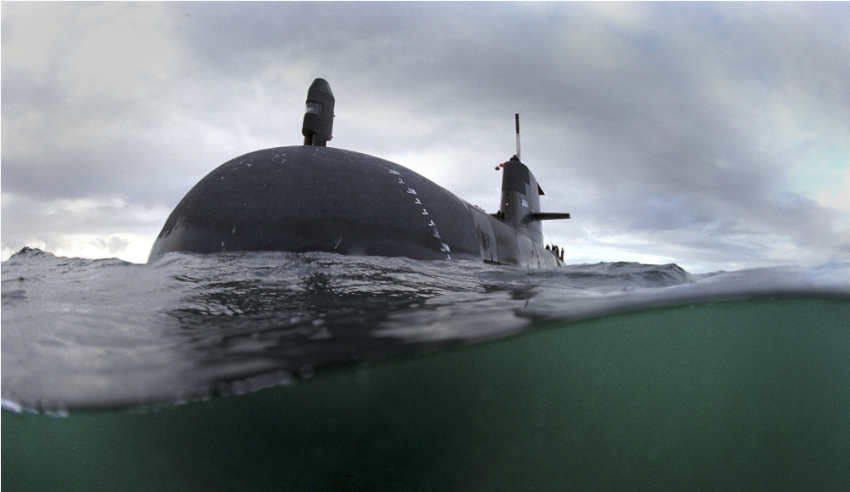In its annual The Cost of Defence report, the Australian Strategic Policy Institute (ASPI) has urged the government to revisit the 2016 Defence White Paper amid ongoing deterioration of the strategic environment and changing capability needs.
To continue reading the rest of this article, please log in.
Create free account to get unlimited news articles and more!
The report for the 2018-19 Defence budget, which said Defence costs total $99,606,202.74 per day, argues that while the government is broadly meeting its commitment to get the Defence budget to 2 per cent of GDP by 2020-21, the government needs to readdress where these funds are being spent.
Defence economics senior analyst and author of the report Dr Marcus Hellyer argues that the strategic environment Australia is facing has continued to worsen since the White Paper's release; with China ignoring the existing rules-based global order with its de facto annexation and subsequent militarisation of the South China Sea, the current leadership of the US seemingly unable to decide whether it wants to support the existing order, ignore it, or tear it down, while the development of emergent technologies such as cyber, space-based capabilities, artificial intelligence and hypersonics continues, leaving the Australian Defence Force open to an increasingly broad spectrum of threats.
Whether Australia will be able cover all these threats, and others, or whether it should prioritise select threats is up for debate, but Dr Hellyer says the 2016 White Paper, which sets out six drivers that shape Australia's security environment, did not set any parameters around such prioritisation, as the papers before it had done.
"Unfortunately, the 2016 Defence White Paper doesn’t provide clear guidance on prioritisation. It might be time for the government to revisit some of the White Paper’s assumptions, either to confirm that it does set out the right path, or, as we believe it should, make some changes to the plan," the report said.
"The content and timing of Defence White Paper’s investment program have not been revisited, despite changes (for the worse) in the strategic environment it was intended to address."
In this vein, Dr Hellyer also argues pressures to funding are already eminent with sustainment costs growing by the day.
"Sustainment budgets appear to be increasing faster than predicted. Between last year’s PBS and the mid-year additional estimates update, the sustainment budget increased by $1.5 billion, or 16.7 per cent. And this year’s sustainment budget is around $1 billion more than predicted last year. Some of that is likely to be due to different accounting practices that Defence has adopted, but one gets the sense that perhaps the sustainment requirements of an increasingly complex force were underestimated in the White Paper and Defence is having to adjust," the report says.
Dr Hellyer said this funding pressure, which will be most felt in sustainment and personnel, has come from the large chunk of Defence spend going towards the $89 billion Naval Shipbuilding Plan, which will see Australia acquire nine Future Frigates, 12 Offshore Patrol Vessels and 12 Future Submarines, urging for better public debate in this area.
"Funding pressures are already emerging, with more to come in sustainment and personnel right at the time when a large share of the investment budget is being tied up in shipbuilding. Informed decision-making and public debate on these issues is essential to navigating them in order to keep Australia secure," Dr Hellyer said.
"To support this, the government needs to demand Defence provide greater public transparency in its planning and reporting."
Dr Hellyer is not the first to call for more transparency in Defence reporting this year. Centre Alliance senator Rex Patrick called on Defence to undertake serious changes in its acquisition process to deliver better results for the Australian defence forces and the taxpayer after figures released by the Department of Defence revealed major defence projects are facing delays between 14 and 54 months on average.
"The project data that has been released to the Senate by Defence shows that major reform is required in Defence’s approach to the procurement of capability and its subsequent delivery to operational commanders," Senator Patrick said in January.
"Billions upon billions of dollars are being wasted as Defence takes on unnecessarily risky acquisitions."
The joint committee of public accounts and audit also called for Defence’s financial reporting on sustainment to become more transparent and use "plain language".
The joint committee released its report in March this year, eight months after the Australian National Audit Office released its own report examining whether Defence had a fit-for-purpose framework for the management of materiel sustainment.
The committee found that while the financial reporting on Defence sustainment is mostly "adequate", there were overarching problems including "variations in descriptive information, including no explanation of variations in full-year outcomes, the use of different terminology across documents, and missing links between what was planned and what was actually achieved".

 Login
Login







